In home design, marble countertops are undoubtedly one of the most popular choices. This high-end stone attracts countless people with its natural beauty and unique texture. Whether it is the kitchen, bathroom or other places that require a strong and durable surface, marble can provide unparalleled aesthetic enjoyment.
However, before you decide whether to choose marble countertops, there are some key information you need to know. Let's take a deep dive to help you make the most informed decision.
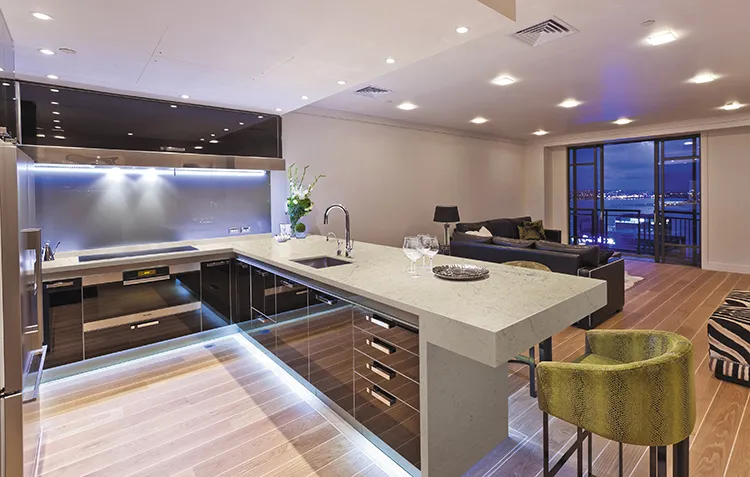
What is marble natural stone?
Marble is a natural stone formed by millions of years of geological changes of calcium carbonate (mainly calcite). It is formed by the crystallization of limestone under high pressure and high temperature, with unique texture and color changes, which makes each marble slab unique. Marble has become an ideal material for construction and sculpture because of its natural beauty and noble texture.
The formation process of marble determines that its texture and color are varied and complex. This change makes marble a material full of personality, and each piece of marble is like a natural work of art. Moreover, due to its unique beauty, marble has historically been a common material in high-end buildings such as palaces, temples, and sculptures, such as the Pantheon in Rome and Michelangelo's David.
Although marble looks extremely luxurious, it also has some characteristics that need to be noted. For example, marble is relatively soft, easily scratched, and very sensitive to acidic substances. Therefore, if you choose a marble countertop, you need to be particularly careful in its care and maintenance.
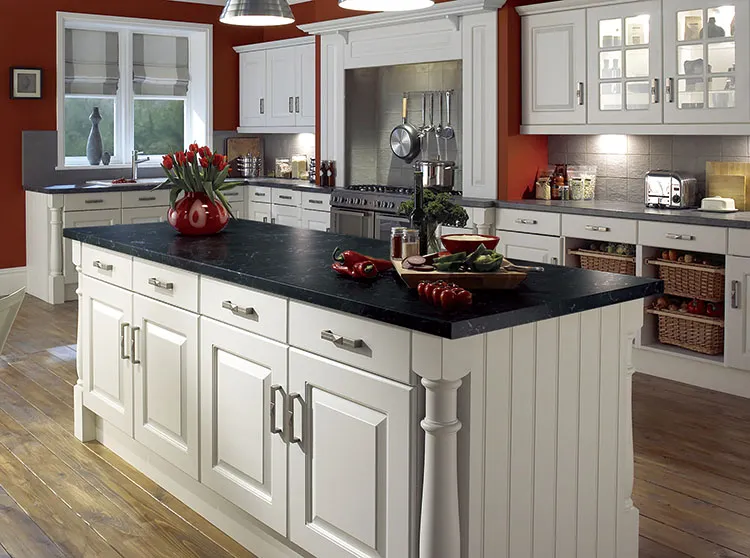
The natural luster of marble stone
Marble countertops are loved in part because of its natural luster. This luster comes from the crystal structure of marble. When light shines on the surface of marble, it will reflect and refract between crystals, resulting in a unique luster. This luster not only increases the beauty of marble, but also makes the space appear brighter and more spacious.
This natural luster can also be further enhanced through grinding and polishing processes. In the process of marble countertop manufacturing, craftsmen usually polish the marble finely to make its surface smooth as a mirror and exude a charming brilliance. This process not only enhances the visual effect of marble, but also protects the surface of the stone to a certain extent, reducing the occurrence of stains and scratches.
However, the gloss of marble countertops also requires careful maintenance. Over time, the surface of marble may become dull due to use. At this time, regular polishing and maintenance are particularly important. To maintain the gloss of marble, it is recommended to use special marble cleaners and polishes, and avoid using acidic or abrasive cleaners that will damage the stone.
In addition, the gloss of marble countertops will also vary depending on its type. For example, Carrara marble usually has a softer gloss, while Calacatta marble has a brighter and more eye-catching gloss. This difference makes different types of marble show unique beauty in different environments and meet various design needs.
Unique pattern for each slab
As mentioned earlier, marble is a natural stone with unique textures and colors. Because the formation process of marble is random, the pattern of each marble slab is unique. This uniqueness makes marble countertops extremely ornamental and decorative.
The pattern of marble countertops can be delicate veins, wide color bands, or even a stunning "moire" effect. These patterns are one of marble's signature features and why many people choose marble. Whether it's used for modern, minimalist designs or classic, luxurious decor, marble's unique patterns can add a touch of art to any space.
Because marble countertops have naturally occurring patterns, it's recommended to handpick the slabs when shopping for marble to make sure the pattern you choose matches your aesthetic. Some people prefer fine grain, while others prefer the broad "moire" effect on marble. Whatever your preference, marble offers a unique and beautiful choice.
However, because the pattern of each marble slab is unique, when using marble over a large area, special attention needs to be paid to the connection and matching of the patterns. For example, when installing a marble countertop in the kitchen, it's necessary to ensure that the textures and patterns between adjacent slabs can be naturally connected to avoid a discordant visual effect.
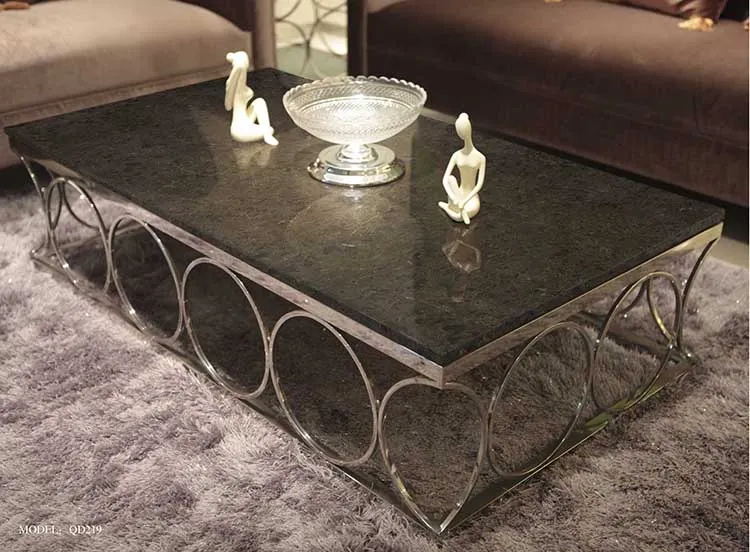
What are the types of marble countertops?
There are many types of marble countertops, and different types of marble have different colors, textures, and characteristics. Understanding these types will help you choose the most suitable marble countertop for your personal preferences and home style. Here are a few common types of marble:
Carrara marble
Carrara marble countertops are probably the most famous and widely used type of marble. It is usually light grey or white with fine grey veins. This marble is characterized by its gentle appearance and relatively uniform texture, which is very suitable for modern and traditional style designs.
Known for its soft tones and durability, Carrara marble is very suitable for kitchen countertops, bathroom countertops, and floors and walls. Its light grey tone allows it to match a variety of cabinet and furniture colors without being too obtrusive.
However, due to its relatively light color, Carrara marble is more likely to show stains and scratches. Special care should be taken in daily use to avoid cutting food directly on the countertop or spilling acidic liquids on it. To maintain its beautiful appearance, it is recommended to seal it regularly to enhance its stain and wear resistance.
Calacatta marble
If Carrara marble countertops represent understated elegance, then Calacatta marble is a symbol of luxury and exclusivity. Calacatta marble is known for its unique white background and bold gold or grey veins. Compared to Carrara marble, Calacatta marble has bolder veins and more contrasting colors, so it is often used in designs that require a striking visual effect.
Calacatta marble is usually more expensive due to its unique beauty and rarity. Its luxurious appearance makes it a preferred material in high-end home design, especially in kitchen islands, bathroom countertops and high-end architectural decoration. This marble not only adds a touch of luxury to a space, but also becomes the visual focal point of the entire space.
However, Calacatta marble also requires careful maintenance. Due to its rough texture, it is more likely to harbor dirt, so it is recommended to seal it immediately after installation and maintain it regularly. Similar to Carrara marble, Calacatta marble is also very sensitive to acidic liquids, so extra care must be taken in daily use.
Marble countertops have low tolerance to acidic liquids
Although marble countertops are beautiful, they have low tolerance to acidic liquids. This is because marble is mainly composed of calcium carbonate, which easily reacts chemically with acidic substances to produce corrosion and etching. Therefore, if the marble countertop comes into contact with acidic liquids such as lemon juice, vinegar, and alcohol, it may leave stains and spots on the surface that are difficult to remove.
To avoid this, when using marble countertops in the kitchen or bathroom, it is recommended to clean up any spilled acidic liquids immediately and use a neutral detergent for cleaning. In addition, the stain resistance and acid resistance of the marble surface can be increased by sealing the surface. This sealing treatment needs to be performed regularly to ensure the long-term beauty and durability of the marble countertop.
At the same time, when using marble countertops, it is recommended to use cutting boards, coasters and trays to protect the countertops and avoid direct contact of acidic substances with the marble surface. This not only prolongs the life of the marble, but also maintains its natural luster and beauty.
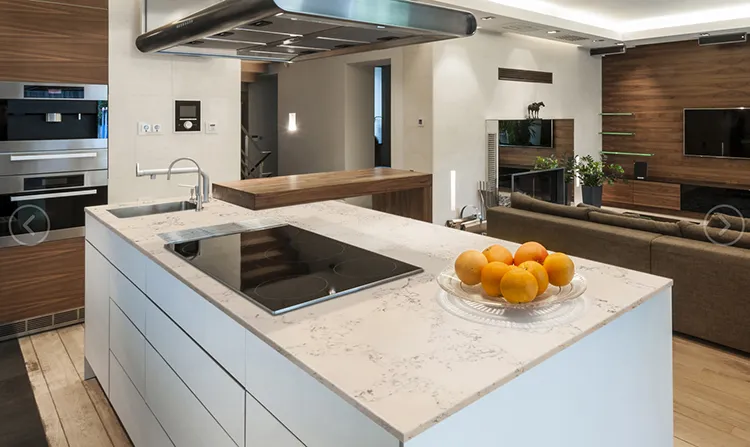
Marble countertop stains
Although marble countertops have an attractive appearance and unique texture, they are also susceptible to stains. Especially in environments with high humidity and high frequency of use such as kitchens and bathrooms, marble countertops are more prone to various stains.
Common marble stains include oil stains, acidic liquid stains, water stains, and rust stains. Oil stains usually come from cooking grease or skin care products, which easily penetrate into the pores of marble and leave marks that are difficult to remove. Acidic liquid stains are caused by acidic substances such as juice, red wine or vinegar splashing onto the marble surface, causing corrosion and etching. Water stains are mainly caused by minerals in hard water remaining on the marble surface, forming white scale marks. Rust stains may be caused by metal objects contacting the marble surface for a long time, causing rust to penetrate the stone.
To avoid the occurrence of these stains, it is recommended to seal the marble countertops regularly and pay attention to protection during daily use. In addition, using professional cleaners suitable for marble to clean stains can effectively protect the beauty of the marble surface.
When dealing with stains, never use strong acid or strong alkaline cleaners, which may further damage the surface of the marble. Instead, choose a mild neutral detergent or a cleaning product specifically for marble and gently wipe the stains clean. If the stain is stubborn, it is recommended to seek professional stone care services to avoid further damage caused by improper treatment.
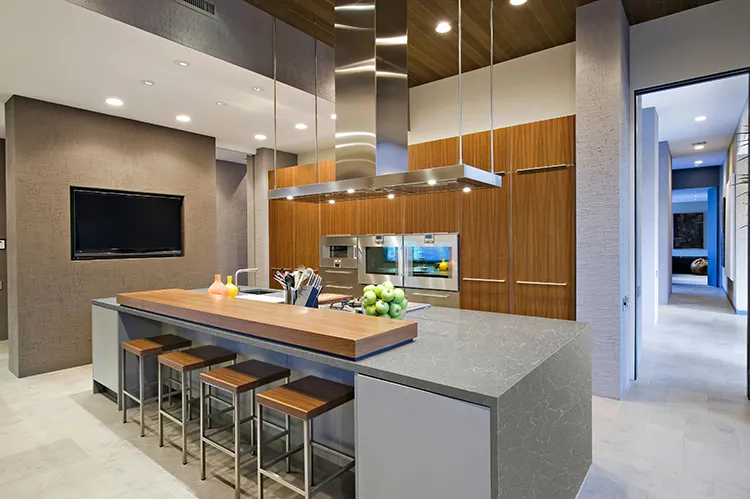
Excellent heat resistance of marble countertops
Another significant advantage of marble countertops is their excellent heat resistance. Compared with other materials, marble has a higher heat resistance and can withstand higher temperatures. This makes marble countertops an ideal choice in the kitchen, especially when hot pots or baking trays need to be placed during cooking.
However, although marble is heat-resistant, it is still recommended to use insulation pads or pot pads to protect the countertops. This is because, although marble can withstand high temperatures, prolonged high temperature contact may cause tiny cracks or discoloration on the surface of the stone. Therefore, when using marble countertops in the kitchen, it is still necessary to be cautious about the placement of hot items.
In addition, marble's heat resistance also makes it very suitable for fireplace countertops or outdoor barbecue areas. In these high-temperature environments, marble's heat resistance ensures that it remains beautiful and functional for a long time without being damaged by high temperatures.

